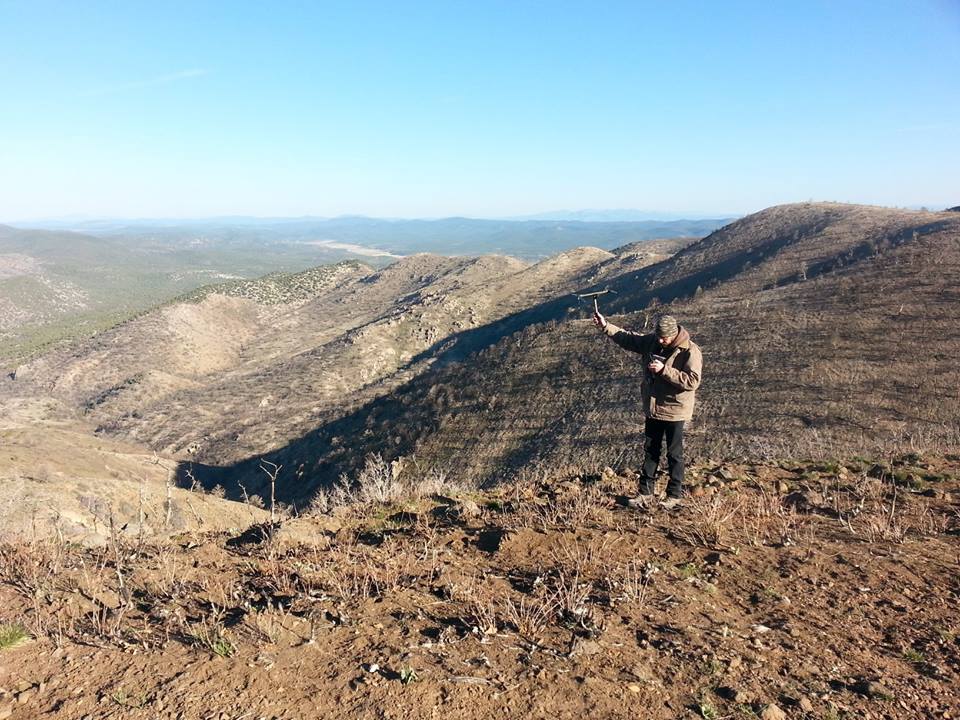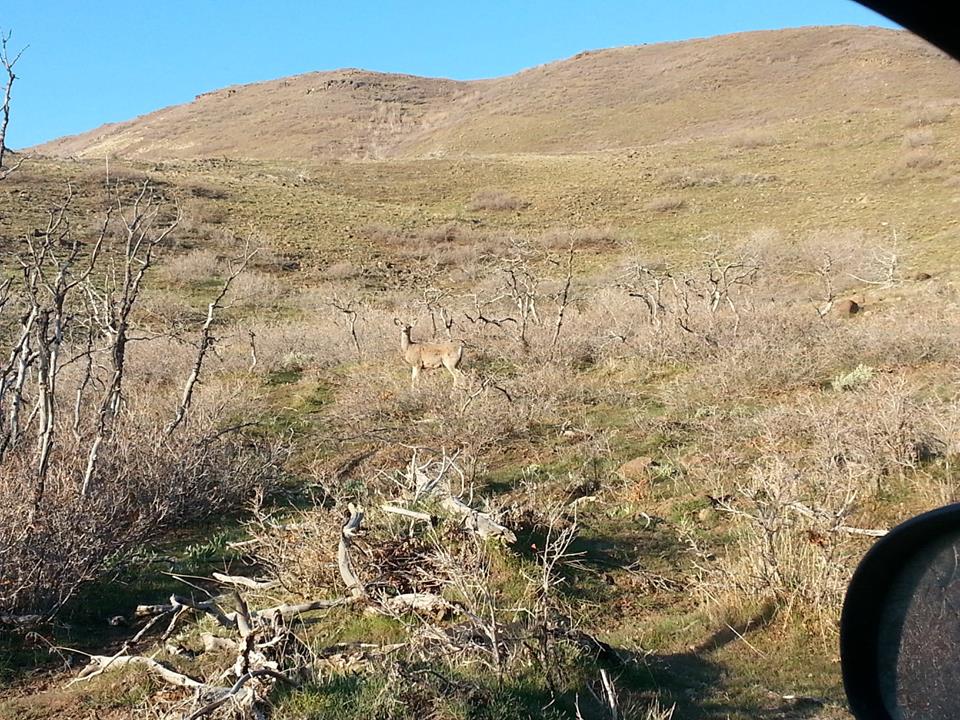
SOUTHERN UTAH — The frigid air didn’t stop Division of Wildlife Resources biologist Jason Nicholes from hopping out of his truck onto his 4-wheeler to voyage off the rough road onto an even rougher road. ‘They’re here a couple weeks early,” he said as he tracked deer herds on top of a barren peak west of Enterprise.
The mild 2013/2014 Southern Utah winter has allowed the deer to move up into the higher elevations earlier then usual and also affected the winter’s deer survival rate. In fact, this is the second year in a row that the DWR’s population model marks an upturn in the winter survival rate. Therefore, the Division of Wildlife Resources is recommending an extra 100 deer tags for next year’s hunting season in the Southern Utah region.

Figuring out the deer survival rate is quite the process, a process that Nicholes spends much of his time immersed in. He spends countless hours monitoring and collecting deer population numbers throughout Southern Utah. Tuesday, in Beaver, Nicholes used these numbers to suggest to several of the state’s decision makers that there should be more deer tags issued next deer season.
The DWR uses several data sources to compile their yearly winter deer survival rates, but one of the most cutting-edge technologies that has validated these numbers recently is the use of radio collars. The DWR has been using radio collars for three years now in Southern Utah, adding about 60 collared deer each year, Nicholes said.

These collars transmit a different signal to biologists like Nicholes when an animal dies. During the winter, it’s typical for 10-20 percent of the deer population in Southern Utah to die, usually more fawns then adults, Nicholes said. He typically checks radio collars once a month throughout Southern Utah. In February, he said, we had lost fewer deer then usual. No collared fawns were lost and only one or two adults were lost.
The increased deer survival rate is a result of the mild winter, Nicholes said. If the deer have to endure cold temperatures, they have to burn more calories, and more of their fat reserve to stay warm and to find food. A colder winter naturally kills off more deer.

On the two hunting units nearest to St. George, designated the Pine Valley and the Zion units, the DWR has teams of biologists and technicians as well as volunteers and helpers from other agencies who continually count the deer. Besides collars and fat content numbers, these individuals also track deer herds and count the ratios of bucks to does to fawns.
One of the other ways the DWR tracks deer is by collecting measurements on the deer population’s estimated fat reserves each fall. Various check points are set up during the hunt to inspect the fat reserves of killed deer.
“All the numbers that we collect, they’re ratios really, and they go into a computer population model,” Nicholes said. Then, the DWR uses these ratios to find out if the overall area deer population is rising or falling, and at what rate. Then they submit their suggestions for deer tags.
Because this year’s population model is rising, Nicholes suggested an extra 100 deer tags to Southern Utah’s Regional Advisory Council tonight at 5 p.m. at Beaver High School. Then if they approve it, like last year, the Regional Advisory Council will share their input with members of the Utah Wildlife Board in Salt Lake City on May 1. If the UWB approves just as they did last year, Southern Utah’s deer hunting region will receive more tags.
Related Posts
- Oh deer; opening day of deer hunt begins with unusual deer behavior, poaching incidents
- Rifle Buck Deer Hunt: The first few hours statewide, healthy and older deer
- Despite shutdown, Deer Hunt begins with anti-lead ammunition pilot program
- Tips for a safe archery hunt; preparation, accident prevention
Email: [email protected]
Twitter: @STGnews
Copyright St. George News, SaintGeorgeUtah.com LLC, 2014, all rights reserved.